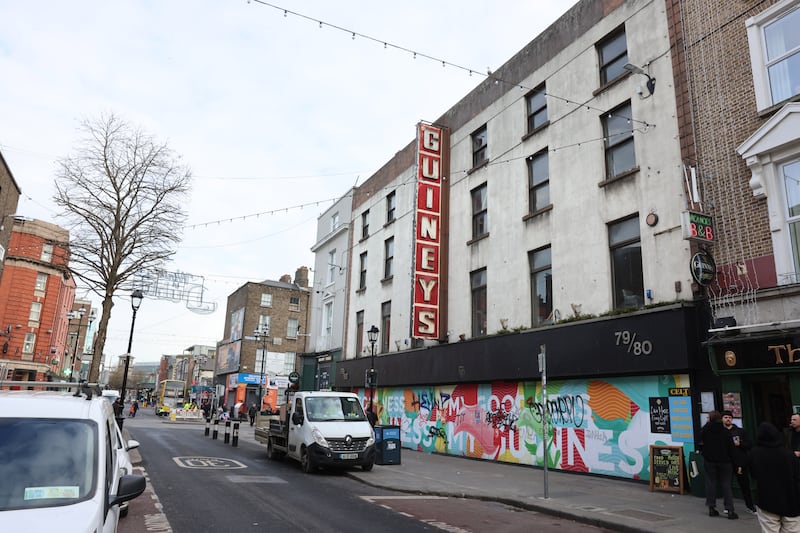Dublin’s dereliction is the city’s stubborn stain, so ingrained it appears impossible to shift.
Boarded-up, even cemented-over shopfronts, upper floors supported by steel struts and roofs perforated by plants are regular features across the city centre. Few streets are free from these ugly, degrading blotches.
Some sites are worse than others. Some buildings are little more than piles of rubble fronted by hoardings that look like they have been there a lifetime. In some cases, they have.
In this series, The Irish Times sets out to explore some of the reasons properties in the city centre – often on prime sites – become and remain vacant and derelict during a time of increasing economic prosperity and unprecedented housing need.
READ MORE
Defining and quantifying dereliction seems like the logical first step to resolving it, but this is where the problems begin.
Dublin City Council operates the Derelict Sites Register under legislation introduced in 1990. The register is somewhat confusingly named as most properties are buildings, not sites. Adding to this confusion is the fact that while some buildings are on the register because they are “in a ruinous, derelict or dangerous condition”, others could be in “neglected, unsightly or objectionable condition”, which can include graffiti or rubbish accumulated in the garden.

Derelict Dublin: Why are there so many rotting buildings in the capital?
20 derelict and vacant buildings in Dublin city centre
There are only about 130 sites on the register, about half in the central postcodes of Dublin 1, 2, 7 and 8, roughly the area between the Royal and Grand canals. If this number seems low, the council has “active files” open on several hundred more properties, which may be added to the register following assessment.
[ Q&A: How are buildings designated as derelict?Opens in new window ]
Geodirectory uses An Post’s register of addresses to compile data on vacancy. Of the significant numbers of properties it classifies as long-term vacant – defined as being unoccupied for more than four years – more than 700 in the city centre are in a ruinous condition and some overlap with the council’s Derelict Sites Register.
Other data sets, such as ESB connections and Local Property Tax (LPT) returns, also provide indications of vacancy, but none can be used as anything approaching an adequate measure of the extent of dereliction, and certainly none provide any understanding of its causes.
Establishing who owns Dublin’s derelict properties would seem the logical next step. However, even with a population ever eager to press its property rights, establishing who owns what can be tricky.
Property registration in Ireland is gradually moving away from an old system that records deeds in the Registry of Deeds to the “title registration system” at the Land Registry.
Since 2011 sales must be lodged with the Land Registry, but if a property hasn’t changed hands since then it may not appear.
When Dublin City Council takes an interest in vacant or derelict building it searches both records, but they do not always yield results and incidents where owners never registered their interest in a property “are more common than one would think”, it says.
The council also goes out and knocks on neighbours' doors, but these efforts too can fall flat.
“These enquiries can be laborious as misinformation or false trails can result in time being spent following the wrong lead,” the council says.
With commercial buildings it “can be difficult to establish the ownership of properties that have been obtained by individuals or companies as part of a bigger development, which fall into disrepair while plans are being drawn up,” the council says.

Local authorities will sometimes begin a compulsory purchase process, pasting a notice on the front door, and often, where previously no owner could be identified, they suddenly emerge to stake a claim.
When it comes to determining dereliction’s causes, it is tempting to assume all neglected buildings have a line tracing back to greed, but often that’s not the case, particularly when it comes to homes.
“For individual residential properties, the causes are myriad. It is not the case all owners of derelict sites willingly let their properties become derelict. Dereliction arises in the majority of cases where there are title difficulties, probate issues, owners with personal difficulties, lack of finances,” the council says.
“For derelict commercial buildings or sites, there can be site assembly at play, viability or funding issues, failure to obtain planning, conservation or archaeological concerns.
“The cost of construction in Ireland has also increased significantly in recent years, impacting on the ability to progress new-build development and the redevelopment of existing buildings.”
Property developer Fergal O’Mahony, whose projects have included the renovation and conversion of older buildings, cites costs, but also the conflicts in satisfying requirements of different sections within the one local authority.
“If you are trying to do up a protected structure, it is virtually impossible because the heritage will not allow you to do what you need to do to make it fire-safe. Once you try to make them safe for the fire officer, the heritage will pull you up. That’s why so many landlords are walking away,” he says.
While the council says the requirements for conservation of historic buildings and fire protection must be heeded, it does “actively engage” with those making applications to achieve “fire safety-compliant design solutions”.
Dublin Civic Trust chief executive Graham Hickey says the cost of restoring heritage buildings is a deterrent for developers.
“You will always make more money by clearing the site. Labour is immensely expensive, relative to materials, and therefore, conservation is at a disadvantage because it’s labour intensive. It’s cheaper to build new stuff. It’s as simple as that,” he says.
Development has also been delayed by successive changes in planning policy in recent years that encouraged developers to scrap existing plans and apply for new, more lucrative schemes, Hickey says.
“When you keep changing the goalposts, owners will always keep looking for the next change to max out their site. A lot of the pattern that we’ve seen in the past few years is rampant site speculation,” he says.
In other cases, neighbouring property owners will spot a vacant building and take the opportunity to stretch their boundaries into yards and gardens, sometimes even breaking through basement walls, which puts already vulnerable buildings at greater risk. It can also result in those neighbours claiming title if the council tries to acquire a derelict building.
“It’s like a corpse with the bluebottles going over it,” Hickey says.
It’s not just private owners who are responsible for Dublin’s dereliction. The State is also culpable for leaving buildings and sites to degrade. The council has itself engaged in “site assembly” for schemes that can result in decades of dereliction, as seen in the case of 60-61 North King Street, a 1940s road-widening project that never went ahead but has left a scar in the north inner city since.
What then can be done to heal the city of these multiple festering sores?
Properties on the Derelict Sties Register are subject to a 7 per cent levy, and interest on unpaid levies at a rate of 1.25 per cent per month. A potentially hefty sum, but there aren’t very many sites on the register, and generally it is only collected if the property is sold.
The vacant homes tax, now just over a year old, is now charged at five times the rate of local property tax (LPT) but only applies to property that “can be lived in” – take out the bathroom and it is possible to secure an exemption. It’s also self assessed.
[ Vacant homes tax raises €2.3m from almost 4,000 properties in its first yearOpens in new window ]
Then there’s the residential zoned land tax (RZLT), a 3 per cent charge that from the start of this month replaces the vacant sites levy (VSL). It does encompass more sites than the VSL, but properties on the derelict register and properties liable for LPT are exempt.
“While penalties play a role in encouraging property owners to take action,” the council says, “their impact can be limited where a restoration, refurbishment or rebuilding project is non-viable at first principles.”
This is where the carrot rather than the stick may be more effective.
Grants are available such as the Croí Cónaithe (Towns) scheme, a vacant property refurbishment grant of up to €70,000, which has been slow to get off the ground, and the Living City Initiative, which was introduced a decade ago for older buildings but never achieved much of a take-up.
There are also schemes specifically designed for heritage buildings: the Built Heritage Investment Scheme and the Historic Structures Fund, which dole out various sums annually.
[ Ireland’s beautiful ruined buildings and abandoned architectural grandeurOpens in new window ]
“More success could be achieved if greater incentives were available given the costs involved, particularly for protected structures and the city’s older building stock,” the council says.
Hickey at Dublin Civic Trust agrees.
“Generally speaking, developers and other occupiers need the cash up front,” he says. “There is an existing framework there for doing this and it just needs to be much better funded and resourced.”
Perhaps, ultimately, the reason Dubliners are still living with persistent dereliction is because as a society we have become inured to it.
“Dysfunctional property ownership and the lack of custodianship of buildings in the city centre is so pervasive that the derelict piece doesn’t look as extreme because the host environment is as almost as bad as the vacancy and dereliction itself,” Hickey says.
“In other cities, if you have well managed and curated streets and there’s a very visible missing tooth, there is a lot more pressure to get it resolved.”
- Sign up for push alerts and have the best news, analysis and comment delivered directly to your phone
- Join The Irish Times on WhatsApp and stay up to date
- Listen to our Inside Politics podcast for the best political chat and analysis














